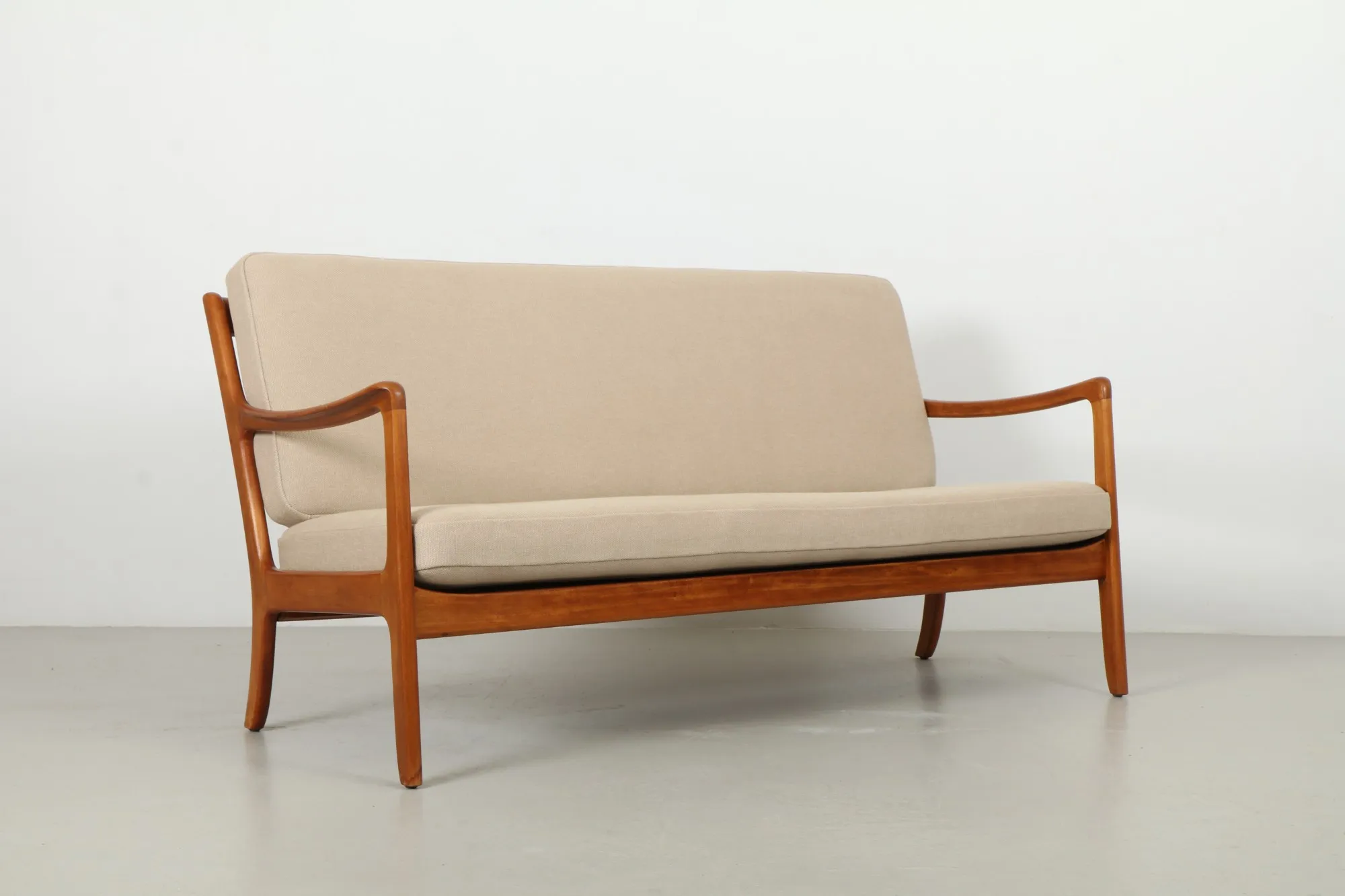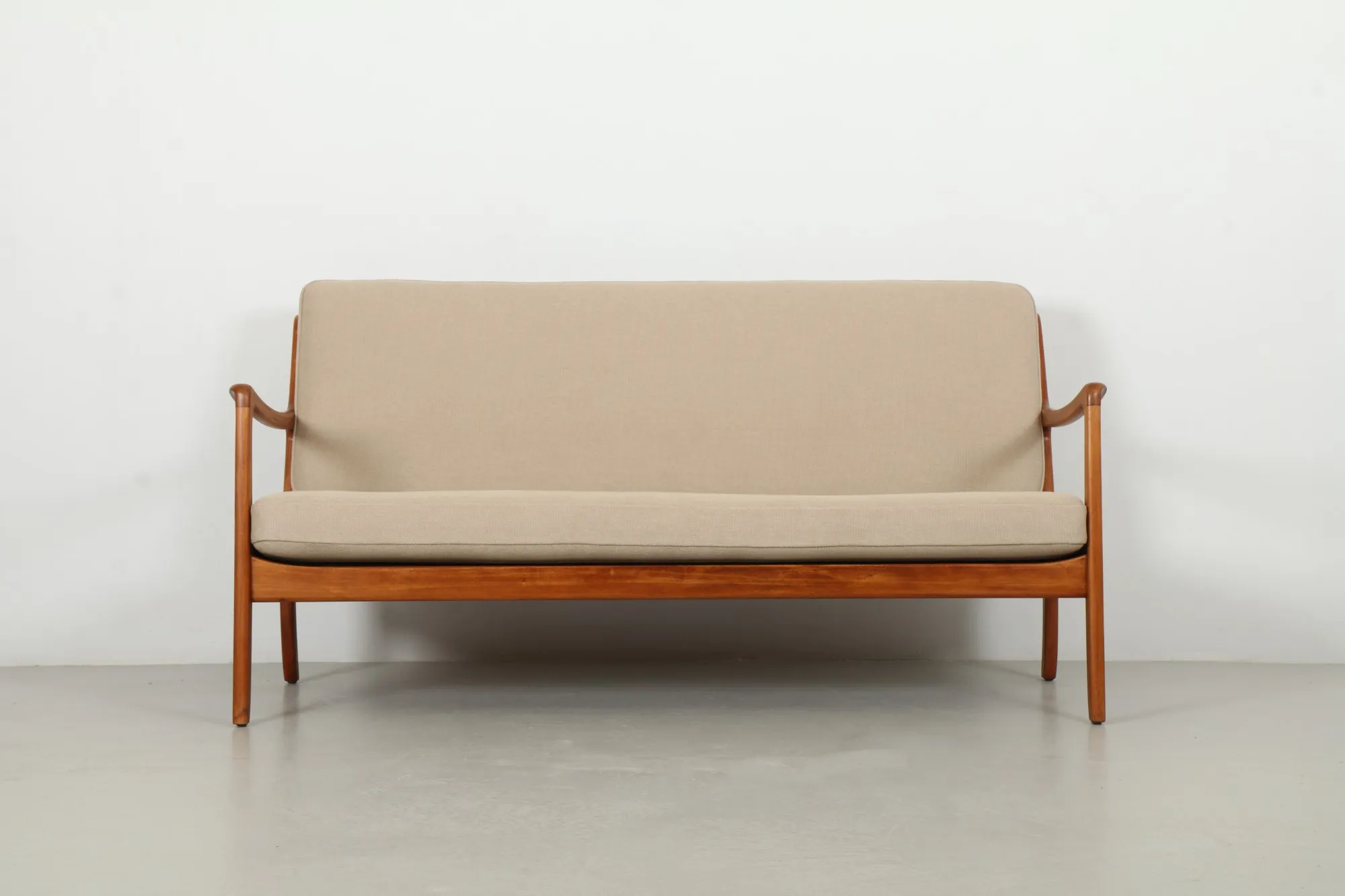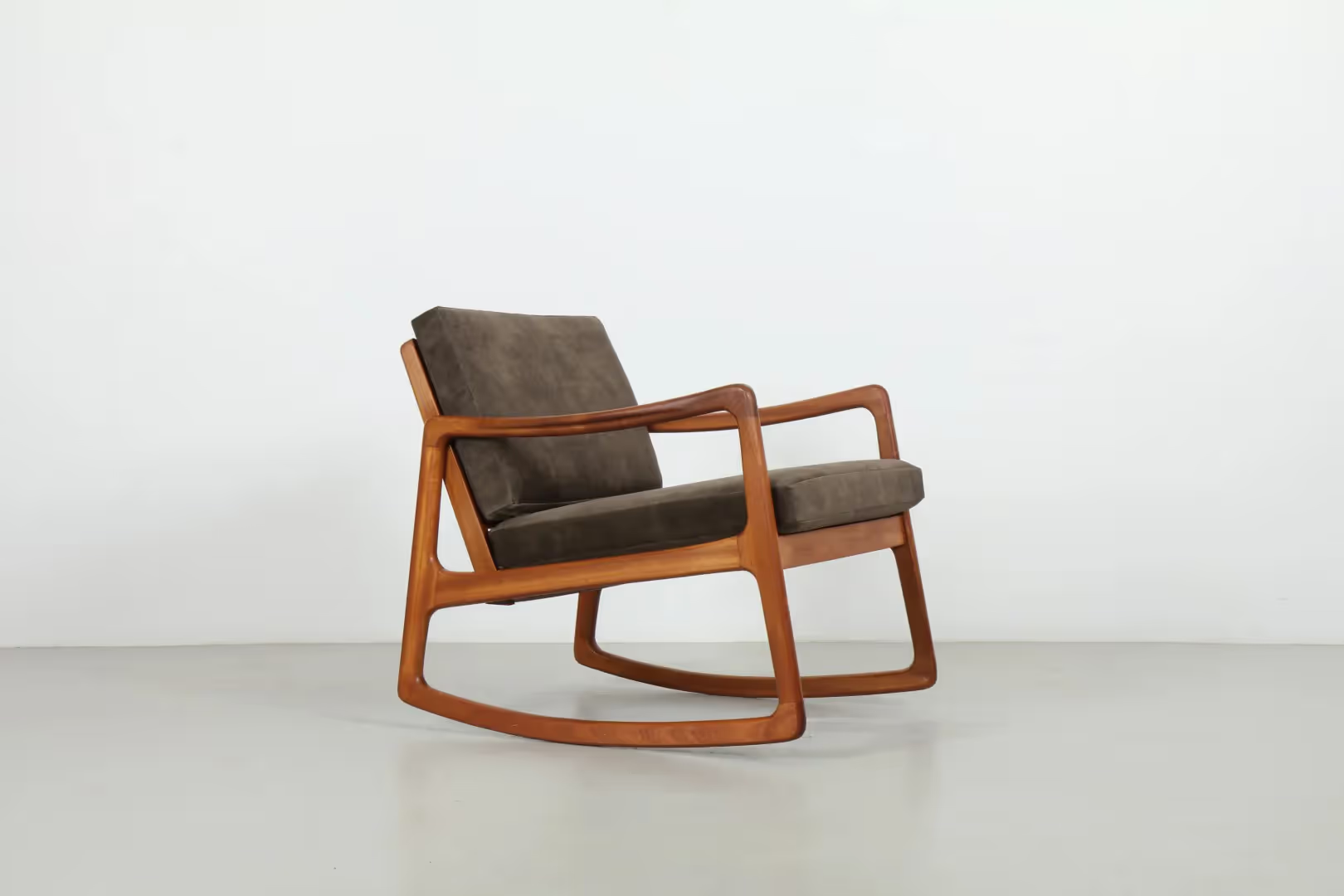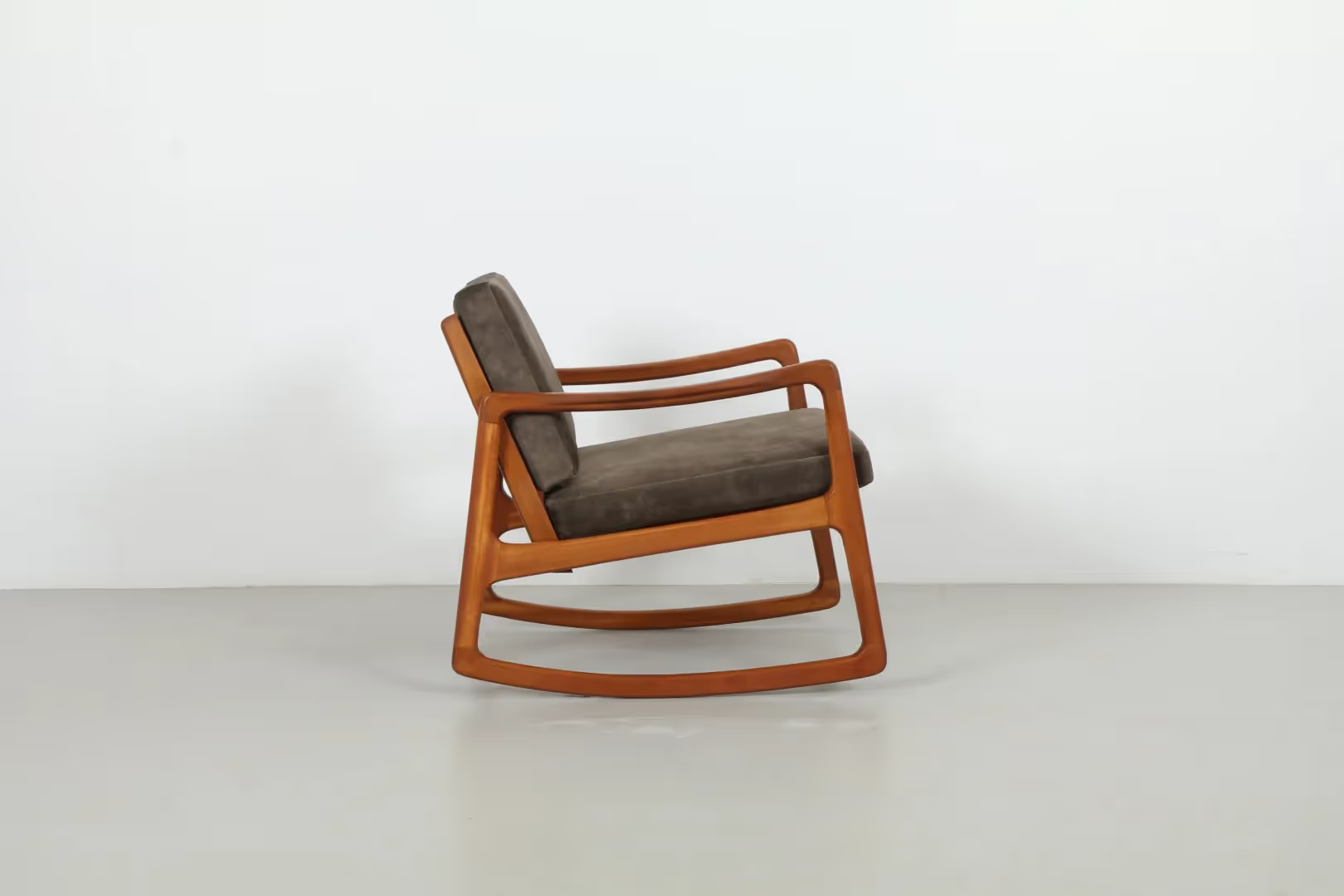.svg)
Ole Wanscher (1903–1985) was born in Copenhagen and became one of the most important figures in Danish Modern, both as a designer and as a professor of architecture with a specialty in furniture design. He studied under Kaare Klint at the Royal Danish Academy of Fine Arts and worked in Klint’s studio from 1924 to 1927 before establishing his own practice. Later, he succeeded Klint as professor at the Academy, where he shaped generations of designers and cemented his legacy as both a practitioner and teacher.
Wanscher viewed furniture design as a branch of architecture, giving construction and form the utmost importance. His designs are now regarded as modern classics—sophisticated, functional, and executed with exquisite attention to detail. Drawing inspiration from classical forms such as Egyptian, Greek, and 18th-century English furniture, he distilled historical references into refined, modern interpretations.
His most significant works were created between the late 1940s and early 1960s. While he was deeply interested in the possibilities of high-quality industrial production and designed with the philosophy of “furniture for everyone,” his finest creations were produced in close collaboration with master cabinetmakers such as A. J. Iversen. Iconic designs from this period include the Colonial Chair, Egyptian Stool, and a series of graceful seating and storage pieces that reflect his architectural approach to balance and proportion.
Today, Wanscher’s furniture remains highly sought after by mid-century design collectors and continues to embody the quiet sophistication and enduring elegance that define Danish Modern design.
"Owning a Wanscher chair is an adventure every day, and will be so even several hundred years from now, for this is how long it lasts." – 'Politiken' Danish newspaper 1958










